Pergalės parkas Memorialinė vieta


 2
2


Įsikūręs Rygoje, Pārdaugavoje, netoli Latvijos nacionalinės bibliotekos.
Pergalės parkas yra vienas didžiausių ir prieštaringiausiai vertinamų parkų Latvijoje. Jis užima 36,7 hektaro teritoriją, kurioje sukurtas monumentalus ansamblis „Sovietų Latvijos ir Rygos išvaduotojams nuo vokiečių fašistinių užpuolikų“, šlovinantis sovietų okupacinę valdžią. Pastatytas XVII a. įtvirtinimų vietoje, tai buvo paskutinė žinoma viešų egzekucijų vieta Latvijoje.
XX amžiaus pradžioje buvusios Kobronos tvirtovės teritorijoje buvo įkurtas kraštovaizdžio parkas. Jis skirtas Rusijos imperatoriui Petrui I, kurio armija 1710 m. užėmė Rygą. Įkūrus Latvijos valstybę, teritorijoje buvo suplanuotas ambicingas projektas – Pergalės parkas. Jis buvo sumanytas kaip Nepriklausomybės karo didvyrių pagerbimo vieta, Latvijos valstybės didybės ir pasitikėjimo savimi simbolis. Parkas, pastatytas už visuomenės aukas, buvo skirtas svarbiems renginiams, tačiau Antrasis pasaulinis karas sutrukdė šiam planui.
Sovietų okupacijos metu parko teritorija tapo 7 vokiečių armijos karininkų egzekucijos vieta. Tai buvo reikšmingas įvykis, nes 1985 m. buvo atidarytas didžiausias Baltijos šalyse sovietų režimą ir jo armiją šlovinantis objektas.
Iki 2022 m. rugpjūčio 23 d. (išardytas) buvo galima apžiūrėti monumentalų ansamblį, kuris reprezentavo vyraujančias paminklų statybos tendencijas Sovietų Sąjungoje. Erdvi parko teritorija puikiai tinka pasivaikščiojimams ir aktyviam poilsiui.
Panaudoti šaltiniai ir literatūra:
Mintaurs, M. Pergalės paminklas Rygoje: istorija ir politika. Oficiali Latvijos okupacijos muziejaus svetainė. Prieinama: http://okupacijasmuzejs.lv/lv/aktualitates/uzvaras-piemineklis-riga-vesture-un-politika-264/ [žiūrėta 2021-02-19.].
Strautmanis, I., Asaris, G. Sovietų Latvijos memorialiniai ansambliai. Ryga: Zinātne, 1986 m.
Latvijos okupacijos muziejaus metraštis: 2006. Karas po karo. Ryga: 2007.




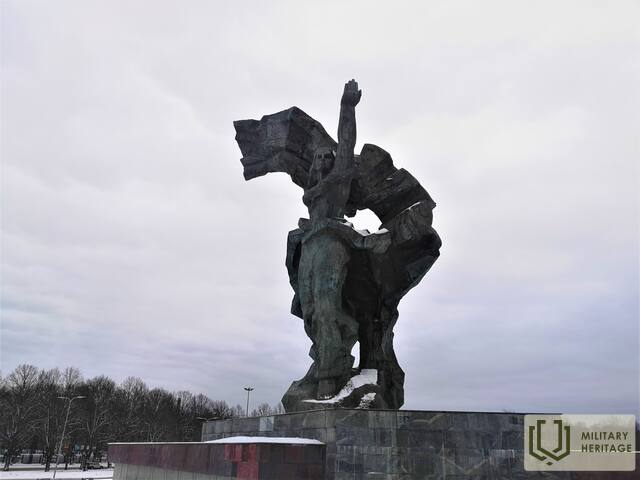
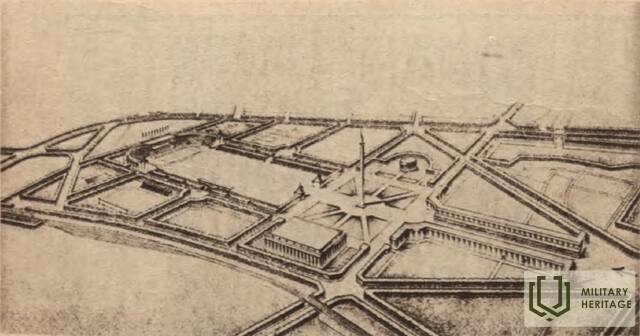
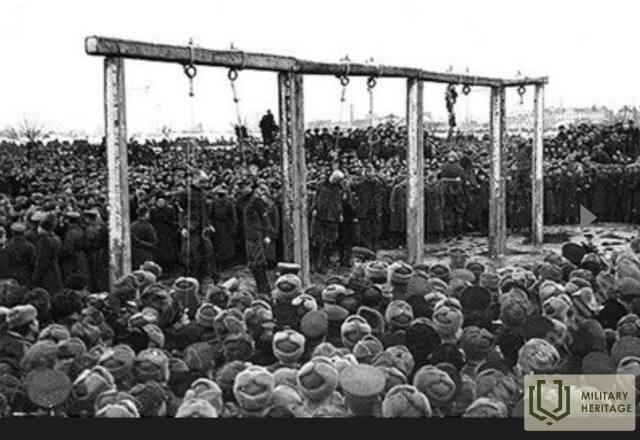
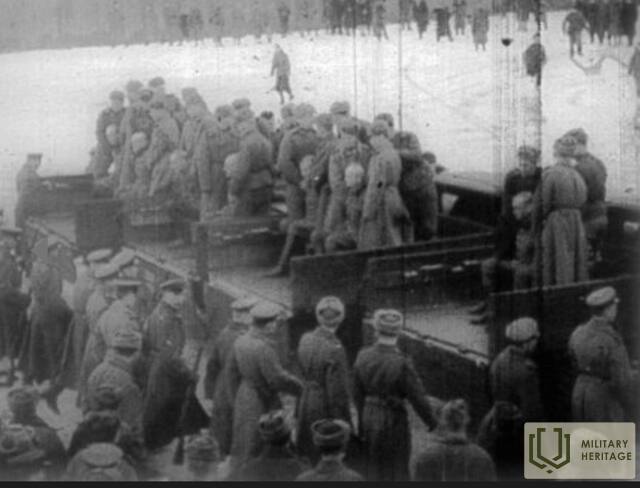
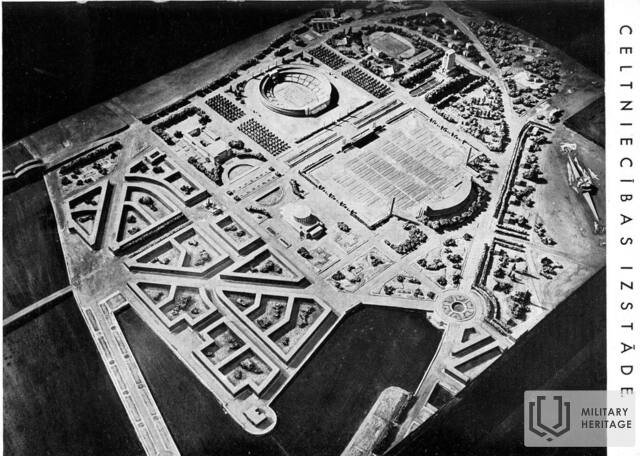
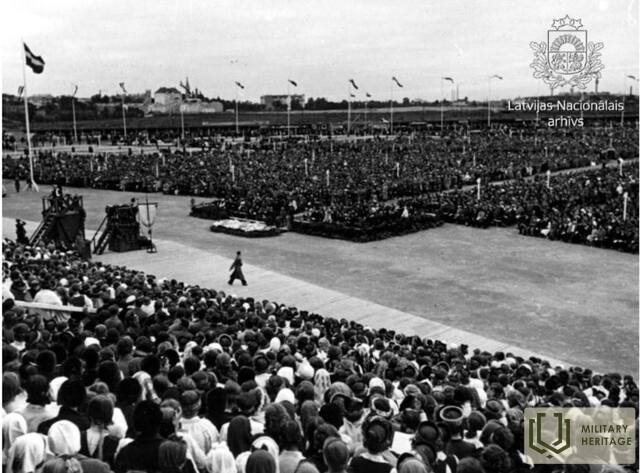
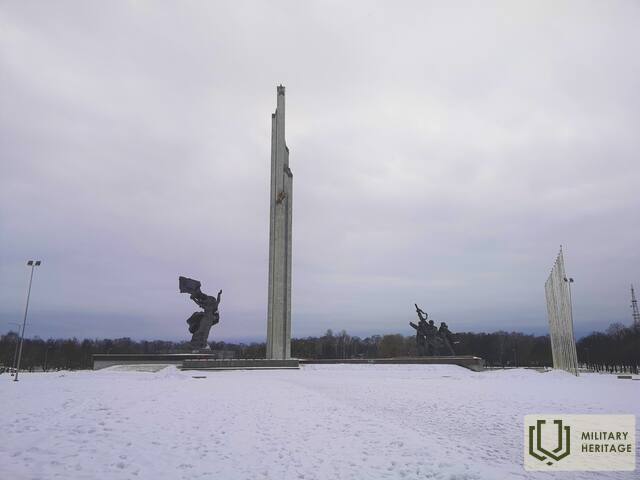
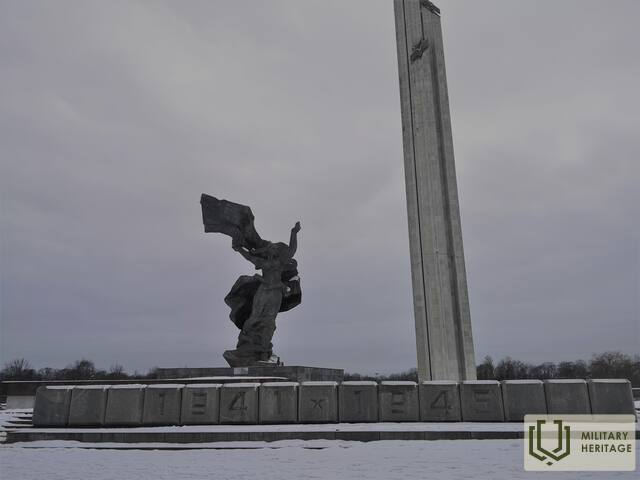



Vadinamasis „Pergalės paminklas“ ir prie jo vykstantys įvykiai buvo viena iš sovietinę okupaciją ir totalitarinį nusikalstamą režimą šlovinančių vietų. Paminklas demontuotas 2022 m. Rugpjūčio 23 d. – simbolinė data (1939 m. buvo pasirašytas Molotovo-Ribentropo paktas, padalijęs Europą į SSRS ir Vokietijos įtakos zonas).